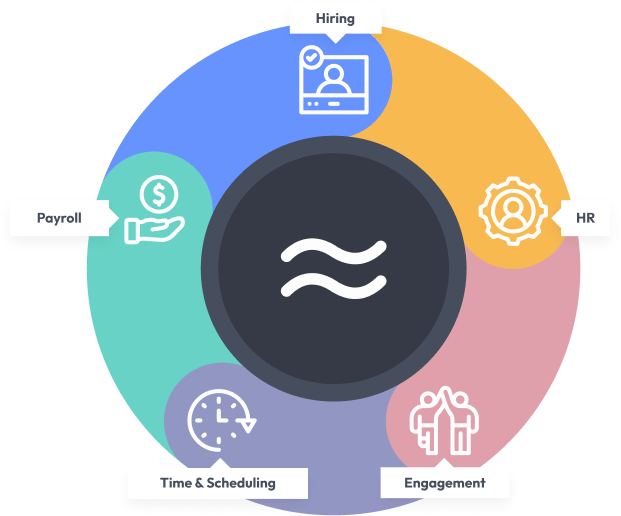How to Hire Warehouse Operators: A Modern Guide for Growing Teams
Let’s be honest—finding and keeping reliable warehouse staff can feel like herding cats some days. Whether you run a bustling distribution center in the Midwest or a small fulfillment hub on the edge of town, the challenge is real. The demand for skilled, dependable warehouse team members has never been higher, and the competition for talent is fierce. So, how do you hire warehouse operators who stick around and help your business thrive? Let’s break it down together.
The Warehouse Hiring Landscape: Why It’s Tougher Than Ever
Before we get tactical, it’s worth pausing to ask: why is warehouse operator recruitment such a pain point? The answer isn’t simple. High turnover, rising wage expectations, and the physical demands of the job all play a role. According to industry research on turnover, hourly roles like warehouse operators see some of the highest churn rates across sectors. That’s a headache for managers and a drain on your bottom line.
But here’s the kicker—every time you lose a warehouse operator, you’re not just losing a pair of hands. You’re losing training dollars, productivity, and sometimes even the trust of your remaining team. Employee turnover costs can sneak up on you, especially when you factor in overtime and the scramble to fill shifts. If you ask me, it’s like trying to patch a leaky roof in a rainstorm.
What Warehouse Workers Want (And Why It Matters)
Today’s warehouse team members aren’t just looking for a paycheck—they want stability, respect, and opportunities to grow. According to research on recruitment and retention, offering benefits and clear advancement paths can make all the difference. It’s not just a “nice to have”—it’s a must if you want to recruit warehouse operators who stick around.
And let’s not ignore the elephant in the room: scheduling. Unpredictable shifts and last-minute callouts are notorious for driving warehouse staff out the door. If you’re not using a modern, mobile-first scheduling tool, you’re probably losing good people to competitors who do. Giving employees more control over their schedules is a proven way to boost morale and retention.
Step-by-Step: How to Hire Warehouse Operators Who’ll Stick
1. Write Job Descriptions That Attract (Not Repel)
Ever read a job posting that sounded like it was written by a robot? Don’t be that company. A clear, honest, and engaging job description is your first shot at connecting with the right warehouse team members. Use plain language, highlight growth opportunities, and don’t shy away from mentioning perks—big or small.
- Be upfront about pay and benefits. Salary transparency attracts more applicants.
- Call out flexibility and work-life balance. Flexibility matters more than ever.
- Highlight your company culture and safety record. Safety is a top concern for warehouse staff.
Check out these job posting examples if you need inspiration, or get creative with your approach using creative tips for job postings.
2. Cast a Wide Net—But Don’t Waste Time
Sure, you can post on the usual job boards, but why not try something new? Platforms like Indeed for hourly hiring and even social media channels like Instagram can help you reach a broader pool of candidates. And let’s be real—sometimes the best warehouse operator is the one who wasn’t even looking until your ad caught their eye.
For a more targeted approach, consider using hiring automation tools that let you filter applicants quickly, schedule interviews via text, and reduce time-to-hire by half. That’s not just a sales pitch—it’s a lifeline when you’re short-staffed and every hour counts.
3. Screen for Attitude and Reliability
Skills can be taught, but attitude? That’s harder to change. As one fast-food chain’s success shows, hiring for attitude and training for skill pays off in lower turnover and a stronger team culture.
- Use behavioral interview questions to assess reliability and teamwork. Cultural fit interview questions can help you spot red flags early.
- Don’t skip reference checks, even if you’re in a hurry. Past performance is a good predictor of future reliability.
And if you want to get fancy, try pre-employment assessments to objectively evaluate candidates’ skills and fit for the job.
4. Streamline Onboarding and Training
Nothing kills enthusiasm like a clunky onboarding process. The faster you can get new hires up to speed, the sooner they’ll start delivering value. Digital onboarding tools—like those from Workstream—let you send paperwork, training modules, and reminders straight to your new team member’s phone. That’s not just convenient; it’s a game-changer for busy managers and workers alike.
For more on onboarding, check out these onboarding templates or learn how to get onboarding right.
Retention: Keeping Your Warehouse Team Members Happy
Why Do Warehouse Operators Leave?
Let’s cut to the chase—warehouse operator recruitment is only half the battle. Retention is where the real savings (and headaches) live. High turnover is often caused by:
- Lack of advancement opportunities (young hourly workers crave growth)
- Poor scheduling or unpredictable hours (work-schedule instability drives turnover)
- Insufficient benefits or recognition (benefits matter—even for hourly roles)
And don’t underestimate the power of a simple thank you, or a shout-out for a job well done. Recognition goes a long way in keeping morale high.
Tools and Strategies for Retaining Warehouse Staff
So, what really works? Here’s what leading businesses are doing:
- Implementing mobile-first scheduling and communication tools (see how Gap empowers hourly workers)
- Offering instant pay access and flexible benefits (instant pay access is a big draw for many warehouse team members)
- Providing clear career paths and ongoing training (career development is key to retention)
And if you’re wondering whether all this investment is worth it, consider this: losing a single front-line employee can cost you thousands. Retaining just a handful of extra operators each year can pay for new tech and then some.
Compliance and Recordkeeping: Don’t Let the Details Trip You Up
It’s easy to get lost in the weeds with compliance, but it’s non-negotiable. The Department of Labor requires you to keep accurate records on each warehouse operator—hours, pay, and more. Digital HR platforms like Workstream can automate much of this, helping you avoid costly mistakes and save up to $25,000 a year on lawsuits and fees.
And don’t forget safety training and certifications. A well-documented onboarding process isn’t just good practice—it’s your best defense if something goes sideways. For more on compliance, check out legal resources for employers.
Conclusion: Winning the Warehouse Talent Game
Hiring and retaining warehouse operators isn’t rocket science, but it does take focus, empathy, and the right tools. From writing better job posts to streamlining onboarding and embracing flexible scheduling, every step counts. And when you invest in your people—whether through better tech, clear communication, or just a little more appreciation—you’re building a team that will go the distance.
If you’re ready to hire warehouse operators faster and keep them longer, consider a platform built for hourly businesses. Workstream’s all-in-one HR and payroll solution can help you cut turnover in half, reduce tool costs, and give your managers back precious hours every week. Because at the end of the day, your warehouse is only as strong as the people running it—so why not give them (and yourself) the best shot at success?
More Resources to Level Up Your Warehouse Hiring
- Explore how to streamline hourly hiring
- Learn about traits of committed employees
- Discover templates for efficient scheduling
- See key hiring and retention statistics
- Contact the Workstream team for support






